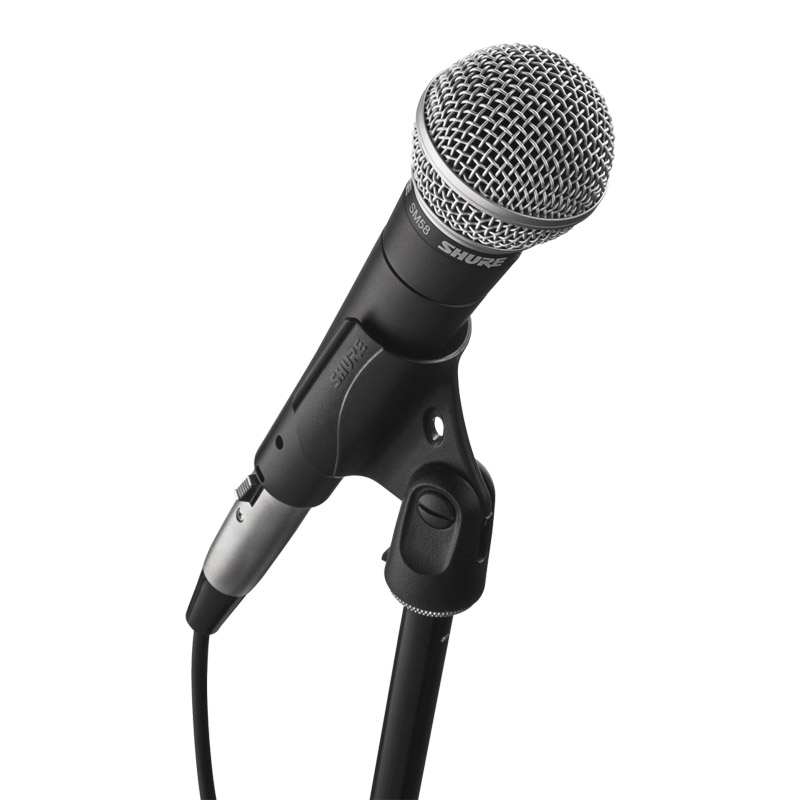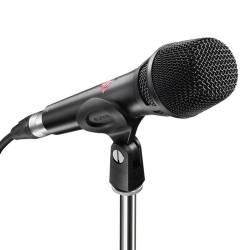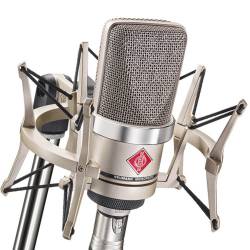Description
The SM58 is known as the world’s most popular performance microphone. It is an instantly recognizable icon for performance and can be seen in the hands of anyone from Pop Idols and Presidents, to Podcasters, Poets and MC’s It is also a very effective microphone for live streaming and podcasting. Simply connect the SM-58 to either an MVi, an X2U, or your audio interface of choice, and you’ve got a very affordable and durable kit for your live stream.
The Shure SM58 is a unidirectional (cardioid) dynamic vocal microphone for professional vocal use in sound reinforcement and studio recording. A highly effective, built-in, spherical filter minimizes wind and breath “pop” noise. A cardioid pickup pattern isolates the main sound source while minimizing unwanted background noise. The SM58 has a tailored vocal response for a sound which is a world standard. Rugged construction, a proven shockmount system, and a steel-mesh grille ensure that even with rough handling, the SM58 will perform consistently. Outdoors or indoors, singing or speech, the SM58 is the overwhelming choice of professionals worldwide.
HOW IT WORKS
Made to handle voice with clarity and care, the uniform cardioid polar pattern reproduces every note as it was intended. And it leaves background noise behind. On any stage – from the club show to the stadium – the SM58 delivers warm, crisp sound, time after time.
Roll with no shake or rattle
Handling noise gets absorbed by the pneumatic shock mount, keeping the sound free of vibration.
Screen out unwanted air
When wind and plosives try to take over, the spherical mesh grille and built-in pop filter keep them out of the mix.
Rugged for the road ahead
Taking the show on tour? The mic’s durable construction and the break-resistant stand adapter keep the SM58 going strong through the toughest performances.
Proximity Effect
Unidirectional (cardioid) microphones progressively boost bass frequencies by 6 to 10 dB below 100 Hz when the microphone is at a distance of about 6 mm (1/4 in.) from the sound source. This phenomenon, known as proximity effect, can be used to create a warmer, more powerful sound. To prevent explosive low frequency sound during close-up use, the bass response gradually rolls off. This provides greater control and helps the user take advantage of proximity effect.
General Rules for Use
- Aim the microphone toward the desired sound source (such as the talker, singer, or instrument) and away from unwanted sources.
- Place the microphone as close as practical to the desired sound source.
- Work close to the microphone for extra bass response.
- Use only one microphone to pick up a single sound source.
- Use the fewest number of microphones as practical.
- Keep the distance between microphones at least three times the distance from each microphone to its source.
- Place microphones as far as possible from reflective surfaces.
- Add a windscreen when using the microphone outdoors.
- Avoid excessive handling to minimize pickup of mechanical noise and vibration.
- Do not cover any part of the microphone grille with your hand, as this will adversely affect microphone performance.
SPECIFICATIONS
- Type: Dynamic (moving coil)
- Frequency Response: 50 to 15,000 Hz
- Polar Pattern: Cardioid
- Output Impedance: 300 Ω
- Sensitivity: at 1 kHz, open circuit voltage, -56.0 dBV/Pa [1] (1.6 mV), [1]1 Pa=94 dB SPL
- Polarity: Positive pressure on diaphragm produces positive voltage on pin 2 with respect to pin 3
- Net Weight: 0.33 kg (0.72 lb)
- Connector: Three-pin professional audio (XLR), male
- Housing: Dark gray, enamel-painted, die cast metal; matte-finished, silver colored, spherical steel mesh grille










